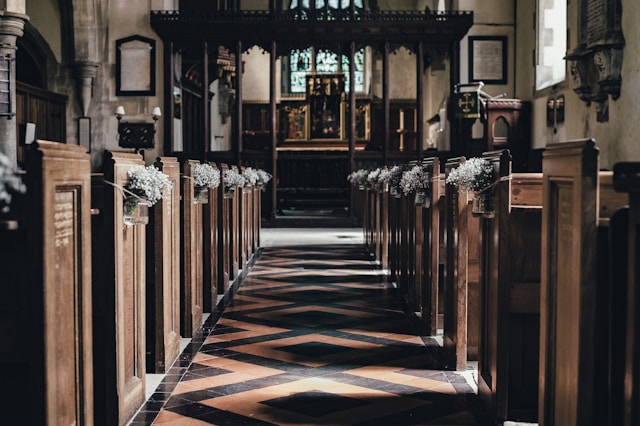Your cart is currently empty!
Unveiling the Sacrament of Baptism: A Comprehensive Guide to Catholic Baptism

Introduction
Baptism holds an unparalleled significance in the Catholic faith, marking the initiation into the Christian community and the commencement of a lifelong journey with Christ. This sacred sacrament symbolizes purification from sin, the bestowment of grace, and the indwelling of the Holy Spirit. In this comprehensive guide, we will delve into the multifaceted aspects of Catholic baptism, shedding light on its history, traditions, and profound spiritual implications.
The History of Baptism
The practice of baptism finds its roots in the New Testament, where it was instituted by Jesus Christ himself (Matthew 28:19). The early Church embraced baptism as a fundamental component of the faith, and it has remained a cornerstone of Christian life throughout the centuries. The Catholic Church has carefully preserved and developed baptismal rituals, incorporating elements from both the Old and New Testaments.
Baptism in the Old Testament
- Purification rituals were common in ancient Israel.
- The Israelites used water to cleanse themselves from physical and spiritual impurities.
Baptism in the New Testament
- Jesus was baptized by John the Baptist in the Jordan River.
- After his resurrection, Jesus commanded his disciples to “Go therefore and make disciples of all nations, baptizing them in the name of the Father and of the Son and of the Holy Spirit” (Matthew 28:19).
Types of Catholic Baptism
The Catholic Church recognizes three distinct forms of baptism:
- Infant Baptism: The most common form, administered to infants shortly after birth.
- Adult Baptism: For those who convert to Catholicism or choose to be baptized as adults.
- Baptism of Desire: A baptism that is not received through water but is granted to those who die in the desire to be baptized or as martyrs.
Who Can Receive Baptism?
In the Catholic Church, baptism is generally reserved for:
- Infants born to Catholic parents
- Adults who have undergone the Rite of Christian Initiation of Adults (RCIA) and desire to become Catholic
- Those who have already been baptized in another Christian denomination but wish to join the Catholic Church
Baptismal Ceremony
The baptismal ceremony is a solemn and joyous occasion that typically takes place within a Catholic church.
Key Elements of the Ceremony:
Sign of the Cross
The priest makes the sign of the cross on the child’s forehead, symbolizing Christ’s victory over sin.
Anointing with the Oil of Catechumens
The child is anointed with oil to strengthen them for the struggles they will face as Christians.
Blessing of Baptismal Water
The water is blessed, invoking the power of the Holy Spirit to purify the child from sin.
Baptism
The child is immersed three times in water while the priest pronounces the words: “I baptize you in the name of the Father, and of the Son, and of the Holy Spirit.”
Anointing with Chrism
The child is anointed with holy oil called chrism, a symbol of the Holy Spirit’s presence and the child’s sharing in Christ’s priesthood.
White Garment
The child is dressed in a white garment, signifying their new life in Christ.
Candle
A lighted candle is given to the family, representing the light of Christ that has come into the child’s life.
Effects of Baptism
Baptism has profound and lasting effects on the recipient:
- Forgiveness of Sin: Baptism washes away original sin and any personal sins committed before the sacrament.
- Adoption into the Family of God: Baptism makes the recipient a child of God and a member of the Catholic Church.
- Indwelling of the Holy Spirit: Baptism grants the Holy Spirit to the recipient, empowering them to live a Christian life.
- Sharing in Christ’s Priesthood: Baptism consecrates the recipient to share in the priesthood of Christ.
- Eternal Life: Baptism opens the door to eternal life with God.
Responsibilities and Obligations
Baptism brings with it certain responsibilities and obligations:
For Parents and Godparents:
- Raising the child in the Catholic faith
- Teaching the child about the sacraments and other aspects of the faith
- Praying for and supporting the child’s spiritual growth
For the Baptized Person:
- Living a Christian life according to the teachings of the Church
- Participating in the sacraments, especially the Eucharist
- Witnessing to Christ through their words and actions
Conclusion
Catholic baptism is a profound and transformative sacrament that marks the beginning of a lifelong journey with Christ. Through baptism, we are forgiven of sin, adopted into God’s family, and empowered by the Holy Spirit. As baptized Christians, we are called to live lives that reflect the grace we have received and to share the Good News of Christ with the world. May the waters of baptism continue to flow, renewing our hearts and strengthening us on our pilgrimage to the Kingdom of God.